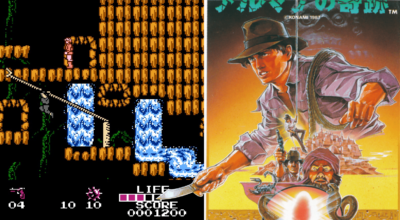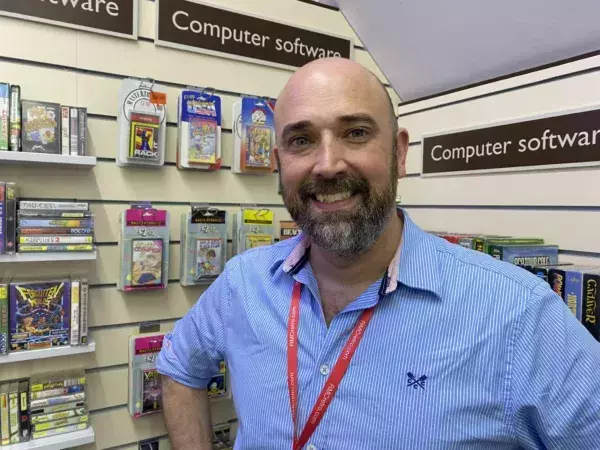
After nearly a decade and a half out of gaming, I aspired to return to my beloved industry. I began interviewing. There are lots more companies now, and I wonder what the current video game workplace is like. It strikes me how vast the industry has become… and how narrow.
During one interview, I find myself sitting with the head of game development. We’re chatting enjoyably about the company’s direction and plans to get there. I’ll never forget it.
“Howard, our strategy is pretty straightforward. We’re dedicated to continuing our current line of sports titles. That’s what we do. It brings us a 1015% return each year, which is what we want. And what we’re looking for is the big hit!”
I suppress the impulse to burst out laughing. I’m thinking this guy has a great sense of humour – he could be fun to work with. I’m waiting for the smile (or some indication he’s joking), but none is forthcoming. I brace myself and ask: “So you’re saying you want to keep doing exactly what you’ve been doing all along, and you’re looking for a breakout hit?” (Pun intended, but lost.)

Game development, early 2000s style: it’s Dragon Rage, developed by the 3DO Company
“Exactly. Now tell me what part you want to play in this.” I don’t physically leave just then, but his absurdity assures me the interview is over. Clearly game dev has come a long way since Atari, but I may not care for its sense of direction.
In 1999 I land at The 3DO Company, and begin looking at how things have changed in 15 years. I notice differences in both game making and game makers. One of my first realisations is that ‘what a video game is’ has changed remarkably. One of my favourite quotes is from Picasso: “Art is not truth, art is a lie that makes us realise the truth”. Games are simulations, abstractions, the lie that helps us see. One of the great things about the VCS was you couldn’t do reality even remotely, so the challenge was to find the clever lies that felt true in a limited context. By the time I reached 3DO, games were still lying, but they were hiding it much better. The simulations and graphics were more believable.
The physics engines were doing actual physics, not rough approximations. The lie was becoming the truth and, for some reason, was all the less attractive for it in my eyes. Another thing that blows me away is the sheer scale of it all. My last game had a team of me and a part-time graphics person. Now I’m joining a team of nearly 30 people (including a management structure). Games are now a million times bigger than they used to be (from 4kB to 4GB)! And they’re better for sure. But are they a million times better? Probably not. There are two explanations for this phenomenon. First, you might say things are less creative these days, that people don’t try as hard to innovate. Another way to say this is: the industry’s matured. Lots of things have been done already.

Game development, early 1980s style: Nolan Bushnell at Atari
It was easier to do new things in the early days, since many avenues had yet to be explored.
Now there is a history, a body of work. Young industries are about innovation; mature industries are about maintenance.
Second, where does the innovation occur? It’s easier to innovate in technology than it is to innovate in creativity. That’s one reason why you tend to see improvements in graphics and polycounts more than you see new types of gameplay. At Atari, tech and gameplay innovation were on the same path. Now they’re parallel lanes on the great development highway.
Another key difference in game making from then to now: hours. Developers always spend a huge amount of time at work – on that level, things appeared the same. But if you look closer, you see a stark difference. At Atari, we were excited to spend almost all of our time at work. We were inspired because we had total control and authorship. Nowadays, it’s not volunteering to be there all the time, it’s subtle (and sometimes not-so-subtle) coercion. Management frequently demands you be there all the time. At 3DO, they went and put clauses in the employment contract like, “We can cancel your vacation if you’re on a deadline.” That’s not the same kind of motivator.
Of course, those of us working at Atari didn’t grow up aspiring to be game makers, because no such thing existed as we were growing up. We grew up with TV and movies. I wanted to be a movie director, or maybe part of a TV production someday. Now people grow up with games. So naturally they think: ‘I love games. I could make them, too. That’s what I’ll do with my life’. So what?
So this: Atari developers never had to deal with disillusionment. We didn’t have a fantasy of what it would be like to make games because we were the first ones to do it. People think it’s glamorous to make games because it’s fun to play games. Then they show up and encounter the realities of game development, which are brutal, and it’s deflating. That can be a heavy burden to carry, particularly when you’re being asked to sacrifice your life for something that maybe isn’t so satisfying after all.
Making games isn’t all fun and games. Why do we do it? It would take a therapist to answer that question. Fortunately, I happen to have one handy, and he’ll tell you all about it next time.





